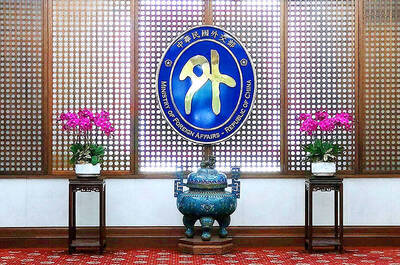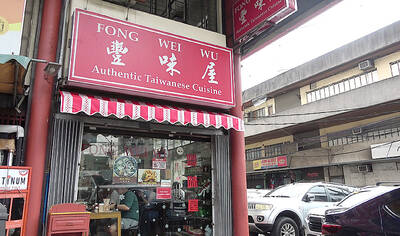Since Taiwan opened its doors to Chinese students, complaints have risen that China’s Cross-strait Student Recruitment Center has made more money than Taiwanese schools and travel agencies.
A total of 933 Chinese students were accepted by Taiwanese universities last year, according to college administrators. School admission fees totaled about NT$7 million (US$237,000), with the Chinese Cross-strait Student Recruitment Center taking in NT$2.6 million for providing certified transcripts of records and other service fees.
To allay concern that allowing Chinese students into Taiwanese universities might affect educational and job opportunities for local students and graduates, the Ministry of Education has imposed restrictions on Chinese enrollment, known as the “three limits, six noes” policy.
Under the policy, acceptance is limited to Chinese students from prestigious Chinese schools, the number of Chinese students is restricted to 0.1 percent of total domestic student recruitment and Chinese students are barred from courses in pharmacy, Chinese and Western medicine, high-tech and national security.
As for the six noes, they refer to no entrance examinations for Chinese students, ensuring that their enrolment would not impact on local student recruitment, no scholarships, no off-campus work for Chinese students, and they cannot join tests for Republic of China professional certifications or civil servant examinations.
Some universities have expressed dissatisfaction over the Chinese center making so much money, while the universities themselves have not benefited and had to cover the recruitment costs themselves.
The universities say they lose thousands of New Taiwan dollars for every Chinese student who is recruited.
Chang Hong-de (張鴻德), secretary-general of University Entrance Committee for Mainland Chinese Students, said that 1,700 Chinese students had applied for university entrance and another 700 for graduate school. The center charged NT$350 for each university application, NT$1,350 for graduate school and NT$2,450 for doctorates.
Asked why Taiwanese universities were not able to get any money from student recruitment, Chang said China’s city and provincial governments take charge of collecting diplomas and transcript of records, while the Cross-strait Student Recruitment Center charges a one-time fee of 500,000 yuan (US$79,200).
After negotiations, the committee and the center settled on the figure of NT$2.6 million, or one-third of the total admission fees, Chang said.
With the rest of the funds being spent on the committee’s daily operations, the committee told the universities that they would not be alloted any money to cover processing fees for Chinese students, Chang said.
The universities have complained that their budget for recruitment of Chinese students was in the red because they have to pay out of their own pockets for professors to review the students’ applications.
Democratic Progressive Party Legislator Kuan Bi-ling (管碧玲) said the issue showed glaring deficiencies in cross-strait collaboration, adding that Beijing’s ban on direct recruitment of Chinese students by Taiwanese universities had only benefited the center.
A large part of the fees go into verifying documents and doing education background checks, because of fears in Taiwan that some Chinese diplomas might be fake, Department of Higher Education director Ho Cho-fei (何卓飛) said.
If the universities are unhappy about the admission fees, they will have to settle the issue with the committee, Ho said.
Chang said that after student recruitment concludes next month, the committee would welcome any debate regarding raising Chinese students’ admission fees.
However, many academics say that China has its own limits and standards on what scores students need to apply for studies in Taiwan.
As Chinese students need only to achieve the secondary score line of the National Higher Education Entrance Examination, it appears that China does not want its better students to go to Taiwan for studies, some academics said, adding that recruitment rates for Chinese students this year do not look promising.
Translated by Jake Chung, Staff writer

The Ministry of Foreign Affairs (MOFA) yesterday voiced dissatisfaction with the Comprehensive and Progressive Agreement for Trans- Pacific Partnership (CPTPP), whose latest meeting, concluded earlier the same day, appeared not to address the country’s application. In a statement, MOFA said the CPTPP commission had "once again failed to fairly process Taiwan’s application," attributing the inaction to the bloc’s "succumbing to political pressure," without elaborating. Taiwan submitted its CPTPP application under the name "Separate Customs Territory of Taiwan, Penghu, Kinmen and Matsu" on Sept. 22, 2021 -- less than a week after China

ALIGNED THINKING: Taiwan and Japan have a mutual interest in trade, culture and engineering, and can work together for stability, Cho Jung-tai said Taiwan and Japan are two like-minded countries willing to work together to form a “safety barrier” in the Indo-Pacific region, Premier Cho Jung-tai (卓榮泰) yesterday said at the opening ceremony of the 35th Taiwan-Japan Modern Engineering and Technology Symposium in Taipei. Taiwan and Japan are close geographically and closer emotionally, he added. Citing the overflowing of a barrier lake in the Mataian River (馬太鞍溪) in September, Cho said the submersible water level sensors given by Japan during the disaster helped Taiwan monitor the lake’s water levels more accurately. Japan also provided a lot of vaccines early in the outbreak of the COVID-19 pandemic,

Kaohsiung Mayor Chen Chi-mai (陳其邁) on Monday announced light shows and themed traffic lights to welcome fans of South Korean pop group Twice to the port city. The group is to play Kaohsiung on Saturday as part of its “This Is For” world tour. It would be the group’s first performance in Taiwan since its debut 10 years ago. The all-female group consists of five South Koreans, three Japanese and Tainan’s Chou Tzu-yu (周子瑜), the first Taiwan-born and raised member of a South Korean girl group. To promote the group’s arrival, the city has been holding a series of events, including a pop-up

A home-style restaurant opened by a Taiwanese woman in Quezon City in Metro Manila has been featured in the first-ever Michelin Guide honoring exceptional restaurants in the Philippines. The restaurant, Fong Wei Wu (豐味屋), was one of 74 eateries to receive a “Michelin Selected” honor in the guide, while one restaurant received two Michelin stars, eight received one star and 25 were awarded a “Bib Gourmand.” The guide, which was limited to restaurants in Metro Manila and Cebu, was published on Oct. 30. In an interview, Feng Wei Wu’s owner and chef, Linda, said that as a restaurateur in her 60s, receiving an